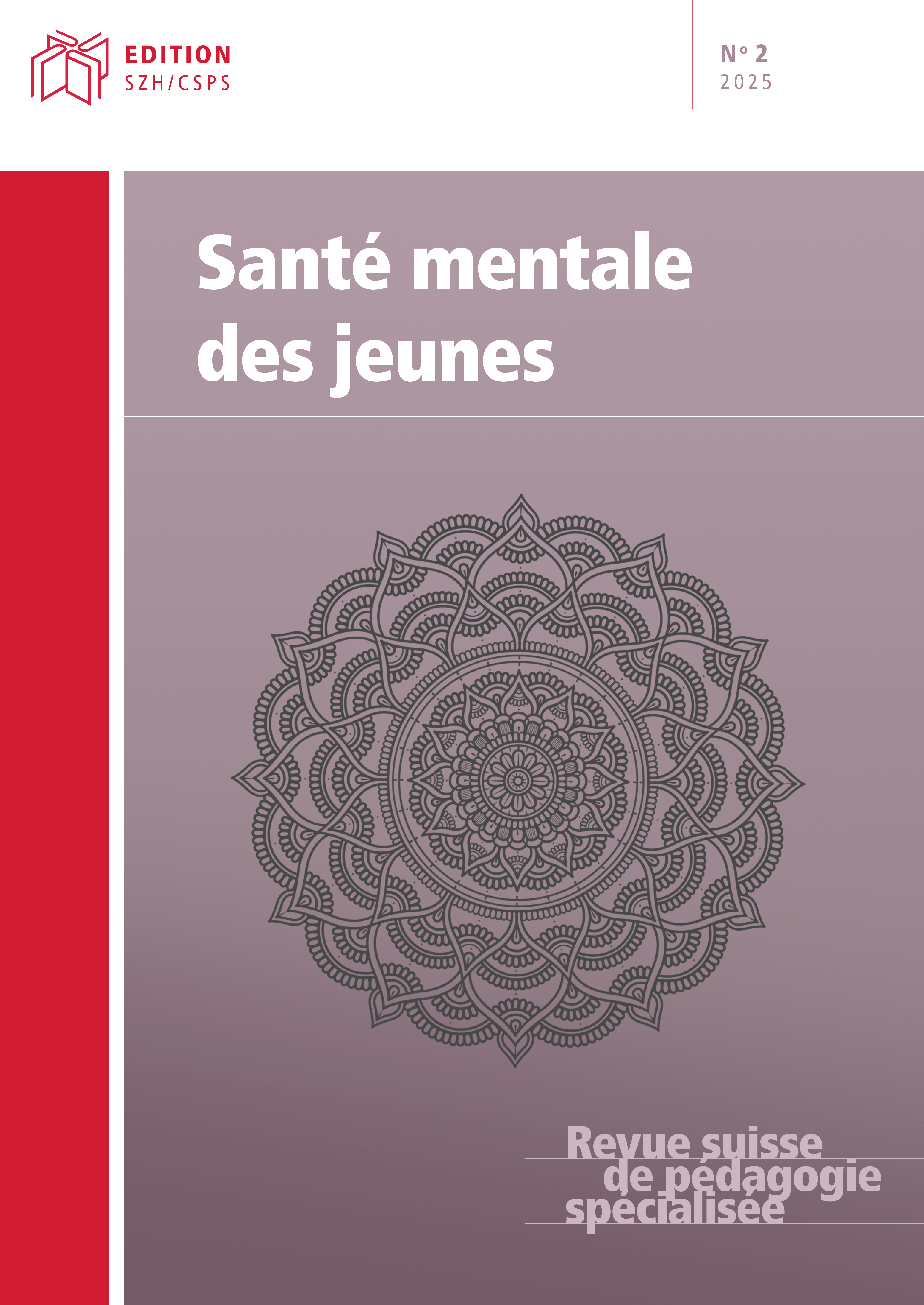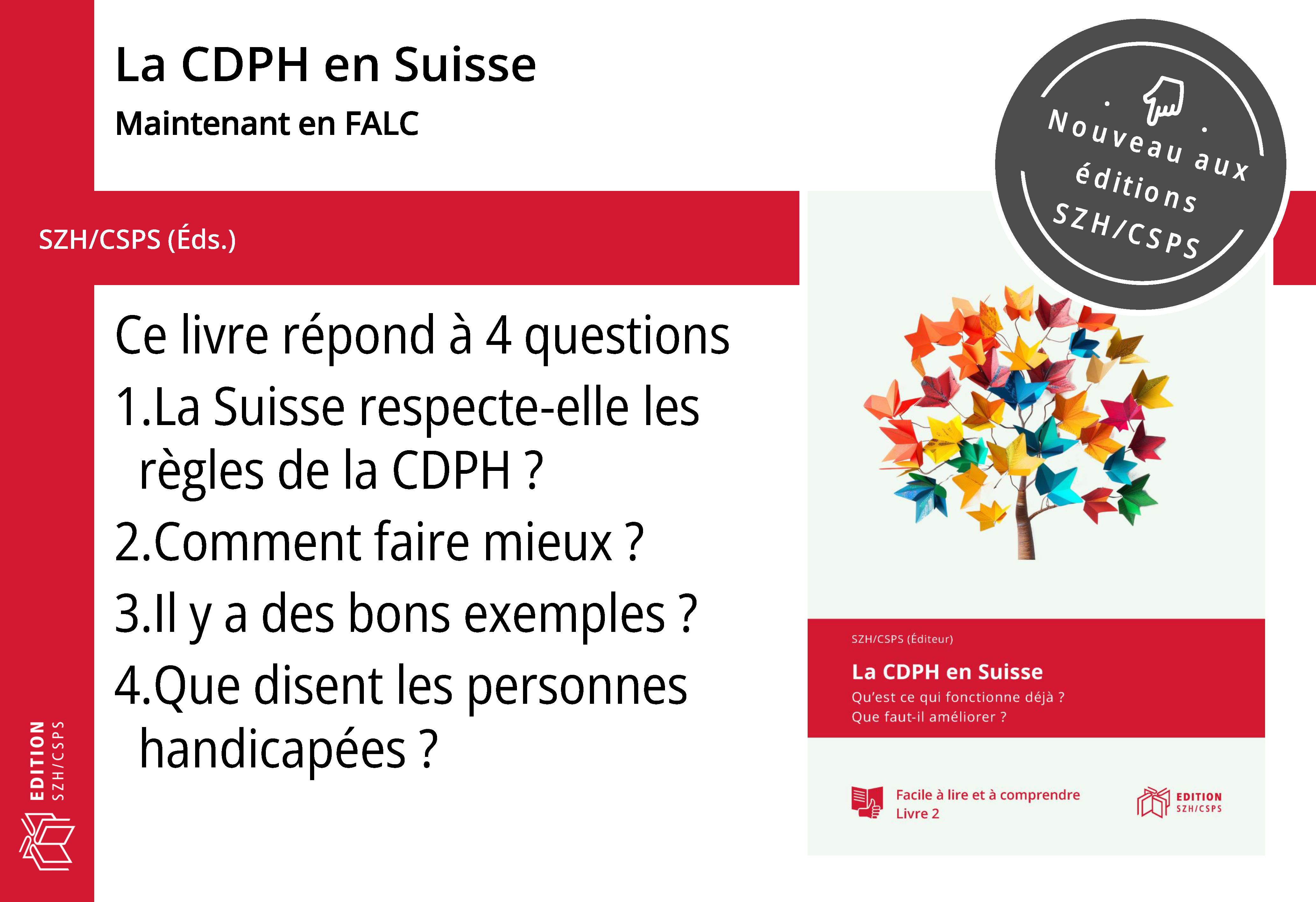De l’école à l’emploi
Enjeux pour la qualité de vie des jeunes en situation de handicap
DOI :
https://doi.org/10.57161/r2025-02-06Mots-clés :
emploi, handicap, qualité de vie, jeune adulte, passage à la vie activeRésumé
Cet article traite des bénéfices que le travail peut apporter à la qualité de vie des personnes en situation de handicap, notamment celles ayant une déficience intellectuelle, qui sont parmi les plus stigmatisées dans l’accès à l’emploi. L’accent est mis sur les apports de la littérature scientifique concernant les jeunes en phase de transition entre l’école et le monde du travail. Pour garantir une transition de qualité, plusieurs bonnes pratiques sont recommandées, telles que l’implication de la famille, l’apprentissage basé sur le travail et la collaboration avec les entreprises.
Références
Akkerman, A., Janssen, C. G., Kef, S., & Meininger, H. P. (2016). Job satisfaction of people with intellectual dis-abilities in integrated and sheltered employment: An exploration of the literature. Journal of Policy and Practice in Intellectual Disabilities, 13(3), 205-216. http://dx.doi.org/10.1111/jppi.12168
Alnahdi, G. (2016). Best Practices in the Transition to Work Services for Students with Intellectual Disability: Perspectives by Gender from Saudi Arabia. International journal of special education, 31(3). https://www.researchgate.net/publication/310490696_Best_Practices_in_the_Transition_to_Work_Services_for_Students_with_Intellectual_Disability_Perspectives_by_Gender_from_Saudi_Arabia
Beyer, S., Brown, T., Akandi, R., & Rapley, M. (2010). A comparison of quality of life outcomes for people with intellectual disabilities in supported employment, day services and employment enterprises. Journal of Applied Research in Intellectual Disabilities, 23(3), 290-295. http://dx.doi.org/10.1111/j.1468-3148.2009.00534.x
Biggs, E. E., & Carter, E. W. (2016). Quality of life for transition-age youth with autism or intellectual disabil-ity. Journal of autism and developmental disorders, 46, 190-204. https://doi.org/10.1007/s10803-015-2563-x
Blackorby, J., & Wagner, M. (1996). Longitudinal postschool outcomes of youth with disabilities: Findings from the National Longitudinal Transition Study. Exceptional children, 62(5), 399-413. https://doi.org/10.1177/001440299606200502
Blick, R. N., Litz, K. S., Thornhill, M. G., & Goreczny, A. J. (2016). Do inclusive work environments matter? Ef-fects of community-integrated employment on quality of life for individuals with intellectual disabilities. Research in Developmental Disabilities, 53-54, 358-366. http://dx.doi.org/10.1016/j.ridd.2016.02.015
Bureau international du Travail [BIT]. (2015). Travail décent pour les personnes handicapées : promouvoir les droits dans le cadre de l’Agenda mondial de développement. Organisation internationale du Travail. https://www.ilo.org/fr/publications/travail-decent-pour-les-personnes-handicapees-promouvoir-les-droits-dans-le
Claes, C., Van Hove, G., Vandevelde, S., van Loon, J., & Schalock, R. (2012). The influence of supports strate-gies, environmental factors, and client characteristics on quality of life-related personal out-comes. Research in developmental disabilities, 33(1), 96-103. https://doi.org/10.1016/j.ridd.2011.08.024
Cummins, R. A. (1996). The domains of life satisfaction: An attempt to order chaos. Social Indicators Research, 38(3), 303-328. https://doi.org/10.1007/BF00292050
Dean, E. E., Shogren, K. A., Hagiwara, M., & Wehmeyer, M. L. (2018). How does employment influence health outcomes? A systematic review of the intellectual disability literature. Journal of Vocational Rehabilitation, 49(1), 1-13. http://dx.doi.org/10.3233/JVR-180950
Eggleton, I., Robertson, S., Ryan, J., & Kober, R. (1999). The impact of employment on the quality of life of peo-ple with an intellectual disability. Journal of Vocational Rehabilitation, 13(2), 95-107. https://journals.sagepub.com/doi/pdf/10.3233/JVR-1999-00047
Engelbrecht, M., Shaw, L., & Van Niekerk, L. (2017). A literature review on work transitioning of youth with disabilities into competitive employment. African Journal of Disability, 6(1), 1-7. https://doi.org/10.4102/ajod.v6i0.298
Felce, D. (1997). Defining and applying the concept of quality of life. Journal of Intellectual Disability Research, 41(2), 126-135. https://doi.org/10.1111/j.1365-2788.1997.tb00689.x
Flanagan, J. C. (1982). Measurement of quality of life: Current state of the art. Archives of Physical Medicine and Rehabilitation, 63(2), 56-59. https://pubmed.ncbi.nlm.nih.gov/6460487/
Foley, K. R., Dyke, P., Girdler, S., Bourke, J., & Leonard, H. (2012). Young adults with intellectual disability tran-sitioning from school to post-school: A literature review framed within the ICF. Disability and Rehabilita-tion, 34(20), 1747-1764. https://doi.org/10.3109/09638288.2012.660603
Husni, S. N. H., & Min, L. H. (2024). CHALLENGES AND OPPORTUNITIES IN THE SCHOOL-TO-WORK TRANSITION FOR STUDENTS WITH SPECIAL NEEDS. Journal of Contemporary Social Science and Education Studies, 4(3), 56-65. http://dx.doi.org/10.37366/jpgsd.v5i01.4638
Ineland, J., Karhina, K., & Vikström, L. (2021). School-to-work transitions for students with intellectual disabili-ties: Teachers' perceptions and experiences of a recent workplace-based reform in Sweden. Journal of International Special Needs Education, 24(2), 86-96. http://dx.doi.org/10.9782/JISNE-D-20-00012
Institut National de la Santé Et de la Recherche Médicale [Inserm]. (2016). Déficiences intellectuelles. Expertise collective. EDP Sciences. https://www.inserm.fr/expertise-collective/deficiences-intellectuelles/
Jahoda, A., Kemp, J., Riddell, S., & Banks, P. (2008). Feelings about work: a review of the socio-emotional im-pact of supported employment on people with intellectual disabilities. Journal of Applied Research in In-tellectual Disabilities, 21(1), 1-18. https://doi.org/10.1111/j.1468-3148.2007.00365.x
Kirsh, B., Stergiou-Kita, M., Gewurtz, R., Dawson, D., Krupa, T., Lysaght, R., & Sahw, L. (2009). From margins to mainstream: What do we know about work integration for persons with brain injury, mental illness and intellectual disability? Work, 32(4), 391-405. https://doi.org/10.3233/wor-2009-0851
Kober, R., & Eggleton, I. R. C. (2005). The effect of different types of employment on quality of life. Journal of Intellectual Disability Research, 49(10), 756-760. https://doi.org/10.1111/j.1365-2788.2005.00746.x
Kocman, A., & Weber, G. (2018). Job satisfaction, quality of work life and work motivation in employees with intellectual disability: A systematic review. Journal of Applied Research in Intellectual Disabilities, 31(1), 1-22. https://doi.org/10.1111/jar.12319
Lindsay, S. (2011). Employment status and work characteristics among adolescents with disabilities. Disability and rehabilitation, 33(10), 843-854. https://doi.org/10.3109/09638288.2010.514018
Lindstrom, L. E., & Beno, C. (2020). Promoting Successful Transitions for Students with Disabilities. Policy Analysis for California Education. https://eric.ed.gov/?id=ED605089
Newman, L., Wagner, M., Cameto, R., & Knokey, A. M. (2009). The Post-High School Outcomes of Youth With Dis-abilities up to 4 Years After High School: A Report From the National Longitudinal Transition Study-2 (NLTS2). National Center for Special Education Research. Institute of Education Sciences. U.S. Department of Ed-ucation. https://ies.ed.gov/ncser/2025/01/20113004-pdf
Organisation mondiale de la Santé [OMS]. (1997). Measuring quality of life: The World Health Organization Quali-ty of Life Instrument. https://www.who.int/tools/whoqol
Organisation mondiale de la Santé [OMS]. (2001). Classification internationale du fonctionnement, du handicap et de la santé : CIF. https://iris.who.int/handle/10665/42418
Robertson, J., Beyer, S., Emerson, E., Baines, S., & Hatton, C. (2019). The association between employment and the health of people with intellectual disabilities: A systematic review. Journal of Applied Research in Intel-lectual Disabilities, 32(6), 1335-1348. https://doi.org/10.1111/jar.12632
Schalock, R. L. (1996). Reconsidering the conceptualization and measurement of quality of life. In R. L. Schalock (Ed.), Quality of Life Volume I: Conceptualization and Measurement (pp. 123-139). American As-sociation on Mental Retardation.
Schalock, R. L., Keith, K. D., Verdugo, M. A., & Gomez, L. E. (2010). Quality of life model development and use in the field of intellectual disability. In R. Kober (Ed.), Enhancing the Quality of Life of People with Intellec-tual Disabilities (pp. 17-32). Springer Netherlands.
Schalock, R. L., & Verdugo, M. A. (2002). Handbook on quality of life for human services practitioners. American Association on Mental Retardation.
Sigstad, H. M. H., & Garrels, V. (2023). Which success factors do young adults with mild intellectual disability highlight in their school-work transition? European Journal of Special Needs Education, 38(4), 573-587. https://doi.org/10.1080/08856257.2022.2148600
Verdugo, M. A., Jordán de Urríes, F. B., Jenaro, C., Caballo, C., & Crespo, M. (2006). Quality of life of workers with an intellectual disability in supported employment. Journal of Applied Research in Intellectual Disabili-ties, 19(4), 309-316. http://dx.doi.org/10.1111/j.1468-3148.2006.00277.x
Waddell, G. & Burton, A. K. (2006). Is Work Good for Your Health and Well-being? The Stationary Office.
Wehman, P., Sima, A. P., Ketchum, J., West, M. D., Chan, F., & Luecking, R. (2015). Predictors of successful transition from school to employment for youth with disabilities. Journal of occupational rehabilitation, 25(2), 323-334. https://doi.org/10.1007/s10926-014-9541-6
Winn, S., & Hay, I. (2009). Transition from school for youths with a disability: Issues and challenges. Disability & Society, 24(1), 103-115. https://doi.org/10.1080/09687590802535725
Publiée
Comment citer
Numéro
Rubrique
Licence
© Elisa Geronimi, Gregorio Avilés 2025

Ce travail est disponible sous la licence Creative Commons Attribution 4.0 International .




